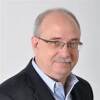The nation is becoming more urbanized. Cities are becoming stronger. But millions of people are being left behind, unable to participate in the urban success, says Henry Cisneros, coauthor of a new book on the topic.
The economic boom unfolding in many cities could lift constituencies that face hurdles to get to the first rung on the ladder to upward mobility, Cisneros told a ULI audience at the 2017 Fall Meeting.
The session was also a large-scale book launch, of sorts, as a new ULI book—and the concepts that drove it—were unveiled. Cisneros, along with coauthors Janis Bowdler and Jeffrey Lubbell, hope their book, Building Equitable Cities: How to Drive Economic Mobility and Regional Growth, will foster creative urban solutions to the problem of inequality.
National and state governments have not fully demonstrated a desire or the ability to champion the equity agenda, said Cisneros, former secretary of the U.S. Department of Housing and Urban Development during the Clinton administration and former mayor of San Antonio. He is cofounder and chairman of CityView.
With other levels of government not fulfilling the obvious needs, cities are finding and enacting local solutions as their economies expand.
“With the cities doing better, shouldn’t we be thinking about using that upward lift that’s happening—that economic momentum, that juice?” Cisneros asked. “This book tries to look at approaches to doing that.”
The solutions can be focused either as “place-based” or “people-based,” said Lubbell, director of the housing and communities initiative at Abt Associates.
Lubbell mentioned a place-based solution in Tysons Corner, Virginia, where local government has encouraged the development of workforce housing, which has been good for retailers in need of employees while creating better jobs and livable commutes for the retailers’ employees.
The people-based solutions deal with education and training for jobs. Useful programs can include basic household financial training with lessons about saving and debt avoidance, said Bowdler, global head of community development, small business, and financial health strategies at JPMorgan Chase.
For many families, having $500 in savings during an emergency can protect them from having to seek funds from a predatory lender, Bowdler said.
The book and the concepts behind it identify methods to “grow the pie for everyone” to have opportunities for success, Bowdler said, in hopes that “everyone has a chance to prosper.”
JPMorgan Chase has long delivered a generous philanthropy program, devoting some $200 million in a year in donations, she said. But the giving did not always deliver the inclusive economic growth to touch people in all parts of a city. New approaches will spread the economic growth to more segments of the population.
Better schools, better transit, and public safety need to spread into all corners of a city, the authors said.
“It’s a crime that people’s life opportunities are determined by where they live,” said Lubbell. “We know zip code matters.”
Great leaps into economic development can be leveraged to propel an entire city’s opportunity, Cisneros said. For example, years ago, the massive expansion of Atlanta’s airport created jobs for all parts of the community as the facility became a powerhouse.
More awareness about equity is working its way into communities across the nation.
San Antonio Mayor Ron Nirenberg, for example, recently considered an “equity lens” when introducing the city’s budget, Cisneros said. It was a novel way to address the city’s needs rather than just spreading the funds evenly across San Antonio’s ten city council districts.
More growth in population—and economic growth—will be centered in cities in years to come, Cisneros said. Urban dominance is spreading across the globe, he said, noting that China now has 100 cities with a population of 1 million or more.
In the United States cities are evolving into large-population districts that can spread hundreds of miles beyond city limits, he said, citing the future growth of the “Texas Triangle”—Houston, San Antonio, and Dallas/Fort Worth, and all places in between.
“It’s becoming increasingly clear the future of our nation’s economy depends on what happens in our cities,” Cisneros said. “We are clearly an urban nation.”

